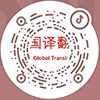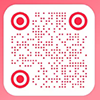Specific Solutions
How Can Advertising Translation Be Truly Localized?|Elite Translation’s Approach to Cultural Relevance
A great tagline can spark emotion—or spark confusion.
A compelling brand story may move audiences—or fall flat when taken abroad.
In today’s globalized marketing landscape, advertising translation is no longer just about converting words. It is a strategic blend of linguistic skill, cultural intelligence, and audience psychology.
When brands go global, the key to resonance is not just fluency—it’s cultural fit.
So how do you make advertising translation truly “local” in spirit and style?
Translation vs. Localization: Know the Difference
Translation focuses on linguistic accuracy—grammar, syntax, and meaning.
Localization adapts content to the cultural, emotional, and stylistic preferences of a specific market.
Advertising translation falls under a more creative category called transcreation—where the goal is not just to translate, but to recreate meaning that inspires, persuades, and connects.
Key Principles of Localized Advertising Translation
✅ 1. Understand Cultural Context
The same word or symbol may mean vastly different things across cultures:
Numbers: 8 is lucky in China, 13 is unlucky in the West
Colors: Red means celebration in China, danger in Western markets
Social norms: Gender roles, family values, and holidays vary greatly
Professional advertising translators must navigate cultural sensitivities and avoid missteps that can damage brand reputation.
✅ 2. Speak Their Language—With Your Brand Voice
Every language has its own way of inspiring trust, urgency, or emotion. For example:
Chinese ads may use terms like “care,” “companionship,” or “craftsmanship”
English campaigns may focus on “empowerment,” “innovation,” or “impact”
French prefers poetic elegance, while German favors clarity and structure
The best advertising translation mirrors local tone and rhythm, while maintaining global brand identity.
✅ 3. Ground Messaging in Local Consumer Insight
What moves an American millennial may not resonate with a Gen Z audience in Southeast Asia. Cultural relevance requires more than language—it demands audience intelligence.
Effective localization considers:
Age, values, and consumption behavior of the target demographic
Local media trends, humor, idioms, and sensitivities
Pre-existing perceptions of the brand or product category
Cultural research and audience testing should inform the translation process from the start.
✅ 4. Test, Refine, Repeat
Transcreated ad copy often benefits from multiple draft versions and A/B testing.
Consider tone, emotional triggers, readability, and response potential across platforms—social media, websites, packaging, and voiceovers.
Why Choose Elite Translation for Advertising Localization?
At Elite Translation, we offer more than words—we deliver market-ready messaging.
Our creative localization workflow includes:
Brand tone alignment and target market research
Dual-path delivery: direct translation + creative copy versions
Native-speaking copy editors with marketing and cultural expertise
Subtitle, voiceover script, and visual content adaptation support
Multilingual consistency across regional markets
We’ve worked with global brands in beauty, automotive, luxury, consumer electronics, finance, and gaming—adapting campaigns that convert curiosity into connection.
Great advertising translation doesn’t just “translate across”—it “transports meaning in”.
If you want your message to resonate, not just be understood, contact Elite Translation.
Let us help your brand speak the language of your audience—with nuance, impact, and local authenticity.


















